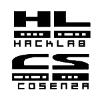Firmware NNXXX
Seguendo questa guida è possibile installare il firmware e collegarsi all'infrastruttura nnxx.
Questo firmware ha le seguenti caratteristiche:
- permette di configurare il proprio apparato via interfaccia web
una volta effettuate le configurazioni minime si autoconfigura collegandosi a openwisp2
l'autoconfigurazione determina la connessione automatica alla rete nnxx via VPN (openvpn)
le rotte per gli altri nodi vengono installate grazie al demone di routing bird2
Per qualsiasi dubbio non esitate a contattarci tramite la mailing list ninux-dev o il canale telegram.
Indice
1. Flashare il firmware
Scaricare uno dei firmware disponibili e flasharlo sull'apparato. (Spazio da ripristinare ma si può richiedere via telegram)
Se avete dubbi sulla procedura da seguire fate riferimento alla guida di installazione ufficiale di OpenWRT.
Se sul vostro apparato è già installato OpenWRT, assicuratevi di fare un reset delle configurazioni.
2. Configurazione minima
Assicuratevi che l'apparato sia flashato correttamente e acceso e procedete con i passi seguenti:
accedete tramite l'interfaccia web all'indirizzo https://192.168.1.1
impostate un hostname per il vostro apparato andanto su "system" e poi ancora "system", cambiate il campo hostname e cliccate su "Save & apply"' in fondo alla pagina
configurate l'indirizzamento andando su "network", poi "interfaces", poi "LAN" e quindi "Edit"; quando avete terminato cliccate di nuovo su "Save & apply"
Una volta eseguito l'ultimo passo l'indirizzo ip del vostro router cambierà, quindi per rientrarci dovrete aggiornare l'indirizzo sul browser.
Assicuratevi che il router sia collegato ad internet.
Dopo qualche minuto l'apparato scaricherà la configurazione della VPN da internet e si collegherà alla rete NNXX.
3. Debugging
Questo tipo di operazioni si svolgono meglio entrando via SSH, ad esempio:
# sostituite <vostro-ip> con l'ip che avete configurato nei passi precedenti. ssh root@<vostro-ip>
L'interfaccia della VPN è up?
ifconfig vpnbas
Per vedere se i processi chiave stanno funzionando correttamente potete usare i seguenti comandi shell:
ps | grep openwisp ps | grep openvpn ps | grep bird
Controllare il log della vpn:
tail /var/log/vpnbas.log
Controllare il comportamento di openwisp-config:
logread | grep openwisp
bird prende le rotte?
birdc show route
Informazioni tecniche sul firmware
Il firmware è basato su OpenWRT, è opensource, le configurazioni e le istruzioni di compilazione sono disponibili su github.com/ninuxorg/ansible-nnxx.
Le configurazioni del firmware (pacchetti usati e altro) sono qui: https://github.com/ninuxorg/ansible-nnxx/blob/master/firmware.yml
I comandi per compilare sono spiegati qui: https://github.com/ninuxorg/ansible-nnxx#compiling
Il processo che viene eseguito automaticamente è spiegato qui: https://github.com/openwisp/ansible-openwisp2-imagegenerator#build-process
Il firmware è dotato di 3 software aggiuntivi che lo caratterizzano








